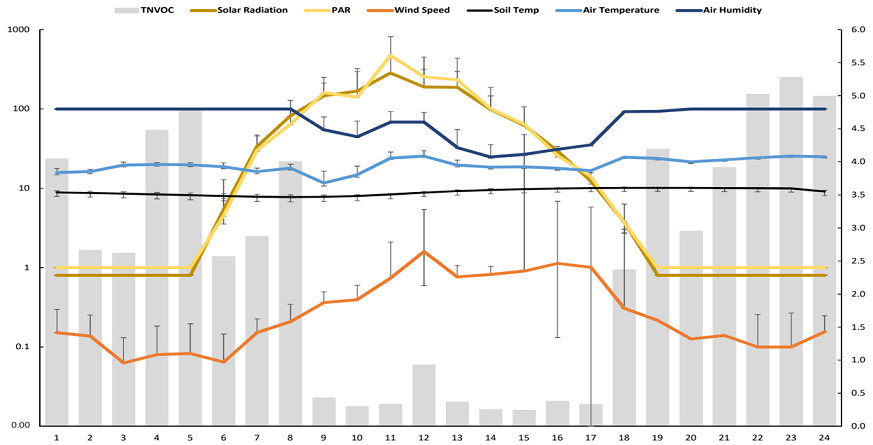After the COVID-19 outbreak, more and more people are seeking physiological and psychological healing by visiting the forest as the time of stay-at-home became longer. NVOC, a major healing factor of forests, has several positive effects on human health, and this study researched about the NVOC characteristics of bamboo groves. The study revealed that α-pinene, 3-carene, and camphene were the most emitted, and the largest amount of NVOC was emitted in the early morning and late afternoon in bamboo groves. Furthermore, NVOC emission was found to have normal correlations with temperature and humidity, and inverse correlations with solar radiation, PAR and wind speed. A regression analysis conducted to predict the effect of microclimate factors on NVOC emissions resulted in a regression equation with 82.9% explanatory power and found that PAR, temperature, and humidity had a significant effect on NVOC emission prediction. In conclusion, this study investigated NVOC emission characteristics of bamboo groves, examined the relationship between NVOC emissions and microclimate factors and derived a prediction equation of NVOC emissions to figure out bamboo groves' forest healing effects. These results are expected to provide a basis for establishing more effective forest healing programs in bamboo groves.

